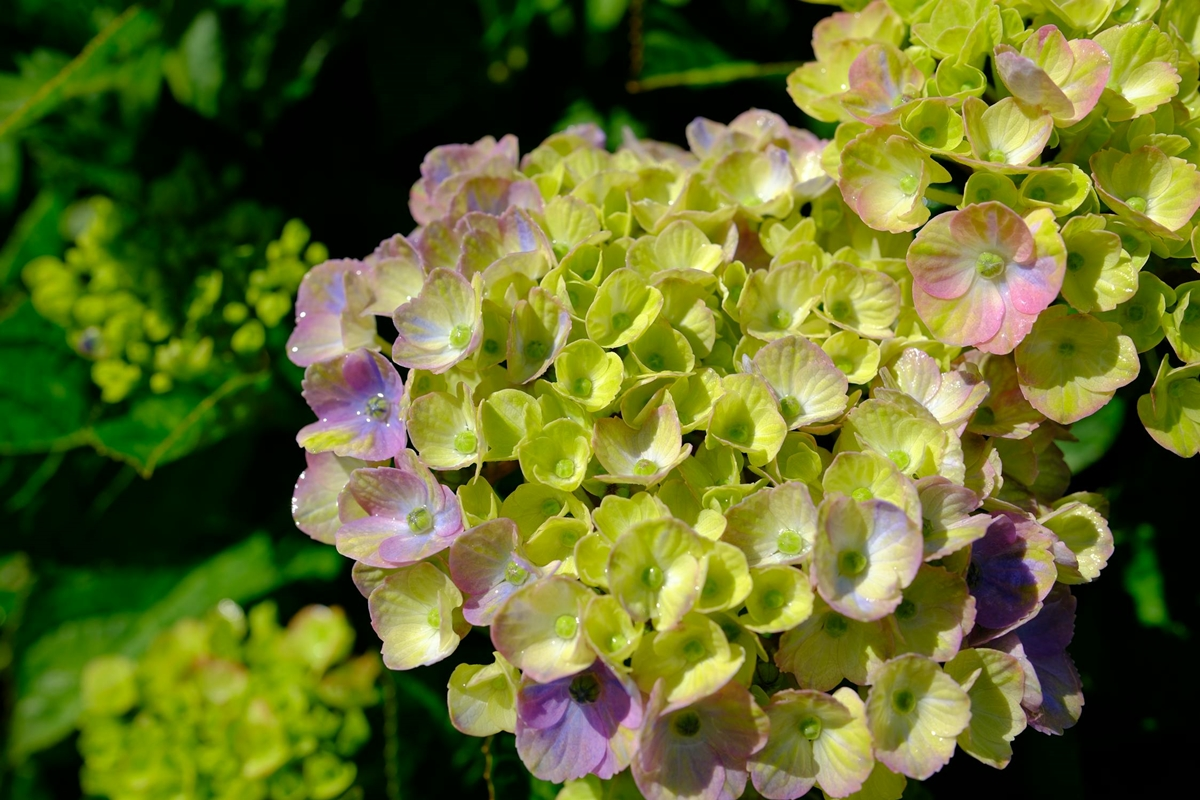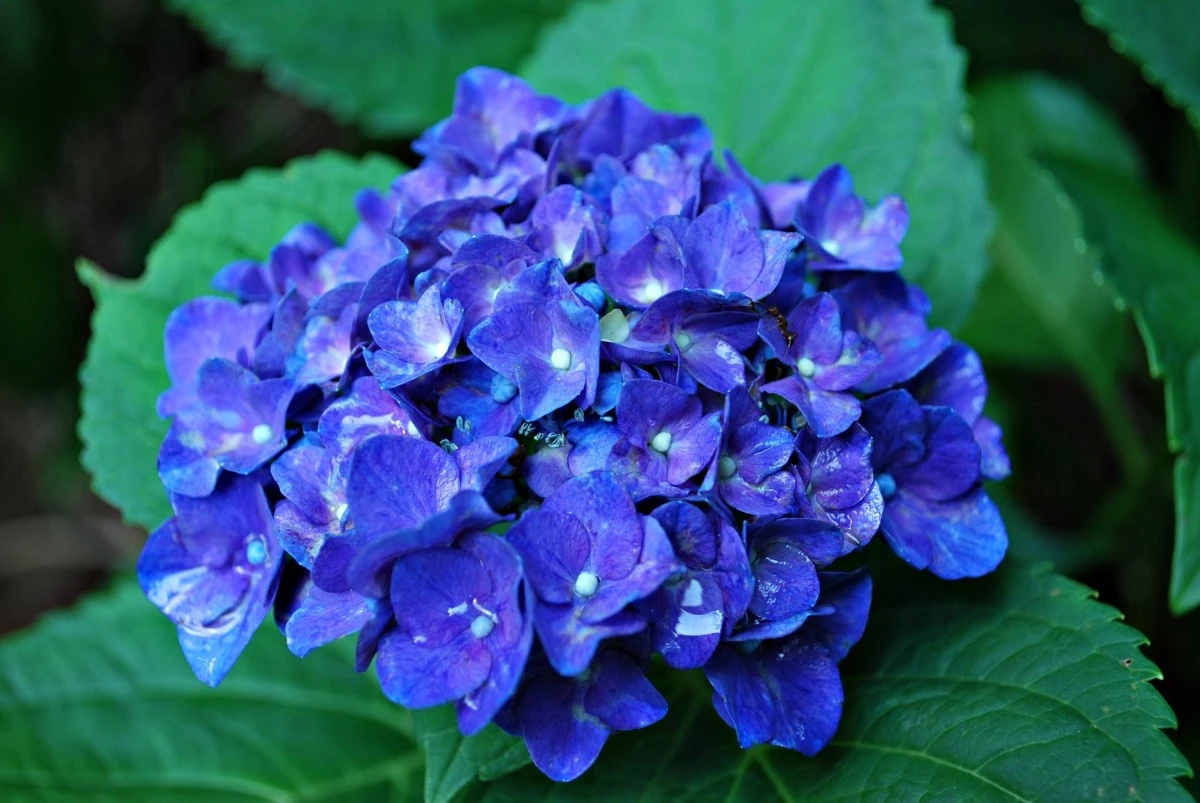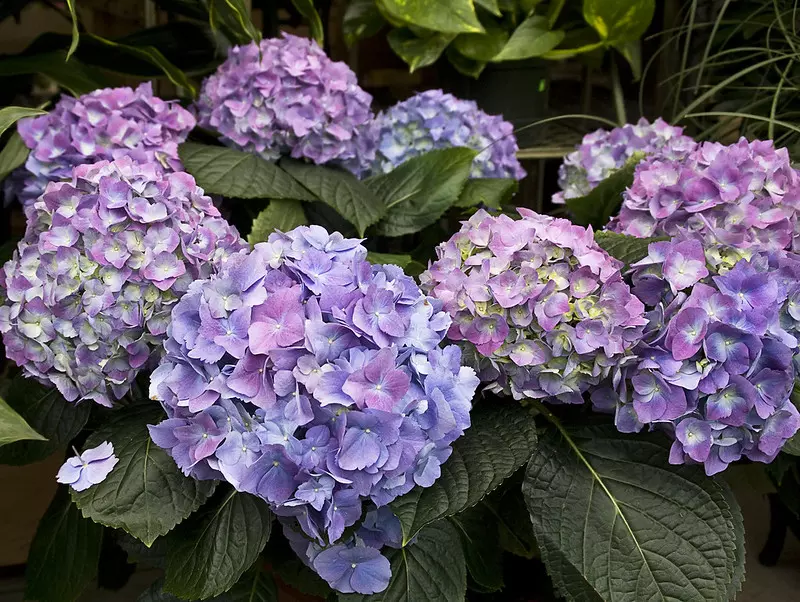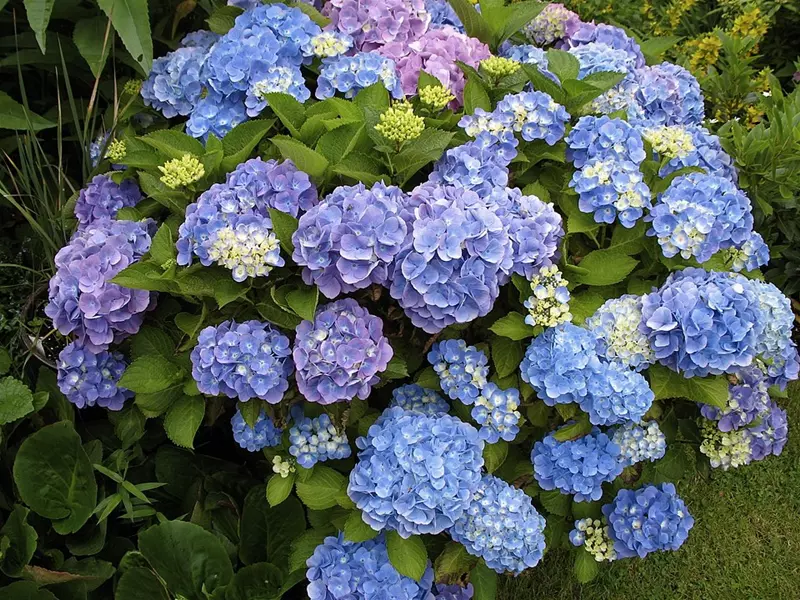
How to Care for Your Hydrangeas in Wales - The Ultimate Guide
Learn how to grow and care for hydrangeas in Wales. Discover the best hydrangea varieties for Welsh gardens, soil conditions, pruning techniques, and frost protection tips.
Read MoreHydrangeas are a popular choice among Irish gardeners due to their stunning blooms and ability to thrive in Ireland's mild, humid climate. However, not all hydrangeas perform equally well in the country’s unique conditions. Understanding how to care for them properly will help you enjoy abundant blooms year after year.

Ireland’s mild, oceanic climate and high rainfall create excellent growing conditions for hydrangeas. However, not all varieties perform equally well, especially in areas with persistent moisture or strong coastal winds. Selecting the right type will ensure healthy growth and long-lasting blooms.
Hydrangeas thrive in the temperate maritime climate of Ireland, but there are key environmental factors to consider:
Based on Ireland’s climate, these hydrangea varieties are the best suited to thrive in gardens across the country:
One of the most popular hydrangeas in Ireland, Hydrangea macrophylla produces stunning mophead and lacecap blooms that range from deep blue to pink, depending on soil pH.
In my experience, Hydrangea macrophylla thrives exceptionally well along Ireland’s west coast, particularly in areas like County Kerry and County Galway, where the combination of mild temperatures, high humidity, and acidic soil enhances its striking blue blooms.
Unlike Hydrangea macrophylla, which prefers shade, Hydrangea paniculata is more tolerant of full sun and fluctuating soil conditions. It produces large, conical flower heads that start off white and gradually develop pink or red hues as they mature.
From my experience, gardeners in Dublin and Cork benefit most from Hydrangea paniculata due to its ability to thrive in both sun and partial shade, making it an adaptable choice for various garden styles.
For gardens in wetter regions of Ireland, Hydrangea arborescens is an excellent choice. It handles excessive moisture better than most hydrangea species and produces large, rounded white blooms.
Less common in Ireland but an excellent choice for woodland gardens, Hydrangea quercifolia is known for its oak-shaped leaves that turn deep red and bronze in autumn, adding seasonal interest.
When selecting a hydrangea variety for your Irish garden, consider the following:
By carefully selecting the right hydrangea variety for your garden’s specific conditions, you can ensure healthy plants with vibrant blooms throughout the growing season. Whether you choose the classic beauty of H. macrophylla or the hardy resilience of H. paniculata, Irish gardens offer the perfect environment for these stunning flowering shrubs.

Irish soils are well known for their richness in organic matter, thanks to high rainfall and a generally temperate climate. However, they also tend to be naturally acidic, particularly in the west of the country and in upland areas. This is one of the reasons hydrangeas often bloom blue in Irish gardens without any soil amendments.
The colour of hydrangea flowers is directly influenced by the pH of the soil in which they are planted. Understanding and adjusting this pH level is key to achieving your preferred flower colour.
In my opinion, conducting a soil test before planting hydrangeas is not only helpful but essential—especially if you're aiming for a particular bloom colour. Soil testing kits are inexpensive and widely available in Irish garden centres or online.
If your goal is to encourage blue flowers, you’ll want to maintain an acidic soil environment. For Irish gardens, this often requires little intervention, but in more neutral soils (such as around Dublin or parts of the midlands), you can enhance acidity using:
If you prefer pink blooms, you’ll need to raise the soil pH by reducing its acidity. This is somewhat more difficult in Ireland’s naturally acidic soils, but it can be done over time by:
In my experience, even small pH adjustments can dramatically alter flower colour over time, especially in container-grown hydrangeas. I’ve had great success using ericaceous compost and rainwater in pots to maintain deep blue hues without needing chemical amendments.
Understanding and managing Irish soil conditions gives you greater control over your hydrangeas’ health and flower colour. With some care and observation, you can tailor your garden’s hydrangeas to bloom in the shades you love most—whether classic coastal blues or romantic soft pinks.
Selecting the right planting site is essential for healthy and long-lasting hydrangeas in Ireland. Due to the country's temperate maritime climate—characterised by high humidity, frequent rain, and moderate temperatures—hydrangeas tend to perform well in most regions. However, certain site conditions will maximise their performance and flower production.
Partial shade is ideal for most hydrangea varieties grown in Ireland, especially Hydrangea macrophylla and Hydrangea arborescens. Morning sunlight followed by afternoon shade allows plants to photosynthesise without suffering from the stress of midday heat. This is particularly beneficial in the eastern and inland areas of Ireland, where summer temperatures can occasionally peak above 20°C.
Hydrangeas such as Hydrangea paniculata are more sun-tolerant and can handle full sun as long as soil moisture is maintained. In drier or more exposed areas—such as parts of County Meath or Wicklow—planting in a spot with afternoon shade can help prevent wilting and leaf scorch.
While Irish gardens benefit from relatively mild winds compared to more extreme climates, hydrangeas—especially those with large blooms—can still suffer from wind damage. Coastal areas in counties like Kerry or Galway may experience salt-laden breezes that can burn foliage and damage flower heads.
Hydrangeas thrive in moist, well-drained soil. Ireland’s frequent rain generally helps maintain adequate moisture levels, but waterlogged soils—especially in low-lying or clay-heavy areas—can lead to root rot.
Microclimates play a significant role in hydrangea health. For example, the southern-facing side of a garden shed or wall may receive more warmth and protection, extending the blooming period in cooler regions such as Donegal or Mayo.
From my own experience, planting hydrangeas near stone walls not only provides shelter from wind but also offers thermal mass—helping to stabilise soil temperature during cooler months and protect roots from late frosts.
In summary, the best location for hydrangeas in Ireland is one that offers morning sun and afternoon shade, good air circulation without strong wind exposure, and rich, moist, well-drained soil. Taking time to choose the right spot will pay off with healthy growth, bigger blooms, and stronger resilience to the changing Irish weather.
Ireland’s consistently moist climate generally provides ample rainfall to meet the water needs of hydrangeas. However, even in this relatively wet environment, there are occasional dry spells—particularly in the summer months or in the east of the country—where supplemental watering becomes necessary to keep hydrangeas thriving.
Hydrangeas prefer consistently moist but well-drained soil. While they tolerate brief periods of dryness, extended drought can lead to wilting, reduced flowering, or leaf scorch, especially in container-grown plants or newly established shrubs.
Established hydrangeas in the ground will usually do well with natural rainfall in Ireland, but it's important to monitor the soil moisture level. If the top 5–7 cm of soil feels dry to the touch, it's time to water.
Although rare, drier weather patterns are becoming more common during Irish summers—particularly in areas like Dublin, Kildare, or Meath. In these instances, regular watering is essential.
Adding mulch is an effective strategy to retain soil moisture and improve overall plant health. In Ireland’s climate, where rainfall is frequent but not always predictable, mulch helps stabilise soil conditions.
Hydrangeas grown in pots or containers require more frequent watering, as container soil dries out much faster—especially in sunny or windy conditions.
In my opinion, keeping a rain gauge in the garden is a useful tool for Irish gardeners. It helps you understand exactly how much water your plants are getting and when it's time to intervene—especially in increasingly unpredictable weather patterns.
To sum up, while Ireland’s climate is naturally favourable for hydrangeas in terms of moisture, strategic watering during dry spells, combined with proper mulching and monitoring, ensures optimal plant health and stunning blooms throughout the growing season.
Pruning is a crucial part of hydrangea care in Ireland, as it helps maintain shape, encourages stronger stems, and promotes abundant flowering. However, the correct pruning time and method vary depending on the type of hydrangea you’re growing. Pruning at the wrong time may remove next season’s flower buds, so it’s important to understand the specific needs of each variety.
Regular pruning helps to:
This popular species blooms on old wood – stems produced the previous year. Pruning too hard or too late can remove the buds and reduce flowering.
This variety blooms on new wood, meaning it can be pruned more heavily without sacrificing flowering.
Like paniculata, arborescens also flowers on new wood and benefits from regular, more aggressive pruning.
From my own experience, hydrangeas in Ireland respond particularly well to gentle, timely pruning – especially in coastal gardens where wind exposure can cause older wood to become damaged or brittle. A balanced approach maintains their natural shape while still supporting healthy flowering.
Ultimately, successful pruning of hydrangeas in Ireland requires an understanding of your specific variety and the unique microclimate of your garden. Whether you live in a damp inland valley or a windswept coastal area, a thoughtful pruning routine will reward you with healthier shrubs and more spectacular blooms year after year.
Although Ireland generally enjoys a temperate maritime climate with mild winters, sudden cold snaps and unexpected frosts can still pose a risk to hydrangeas — particularly in inland and elevated areas. Young plants and certain species such as Hydrangea macrophylla can be especially vulnerable to frost damage, which may result in blackened buds, stunted spring growth, or reduced blooming.
Hydrangeas begin forming flower buds for the next season in late summer to early autumn. A hard frost after this period can damage those buds, leading to a disappointing floral display come spring. In addition, newly planted or younger hydrangeas may not yet be fully established, making them more susceptible to sudden temperature drops.
In my experience, gardeners in western counties benefit from consistent rainfall and milder winters, but even there, a sharp overnight frost in early spring can catch you off guard. A little preparation in autumn goes a long way in protecting your hydrangeas and ensuring a spectacular summer display.
In Ireland, the best times to plant hydrangeas are spring (March to May) and autumn (September to November). This allows the roots to establish before facing extreme weather conditions.
Spring planting encourages strong root development before summer, but regular watering is needed during dry spells. Autumn planting benefits from natural rainfall, reducing irrigation needs.
Based on my experience, planting in early autumn is ideal, as the cooler temperatures reduce transplant shock while the soil remains warm enough for root growth.
Yes! Hydrangeas thrive in coastal areas, thanks to the mild maritime climate. However, salt-laden winds can damage leaves and blooms, so some wind protection is advisable.
In my opinion, coastal gardeners should mulch regularly and consider using slow-release fertilisers to counteract nutrient loss caused by rain and wind exposure.
Yes! Growing hydrangeas in pots and containers is an excellent option for small gardens, patios, or balconies in Ireland.
While Ireland has a relatively mild climate, sudden frosts (especially in inland and northern areas) can damage hydrangeas.
Due to Ireland’s high rainfall, hydrangeas rarely need additional watering. However, during extended dry spells in summer, they benefit from deep watering once or twice a week.
Container-grown hydrangeas dry out more quickly and should be watered every 2–3 days in warm weather.
Hydrangea flower colour is affected by soil pH:
To maintain blue flowers, add aluminium sulphate or organic matter like pine needles. For pink flowers, apply garden lime to raise the pH.
Pruning depends on the hydrangea type:
Hydrangeas in Ireland can suffer from:
Yes! The easiest methods are softwood cuttings (best in spring) and layering (best in autumn).
Some hydrangeas, such as Hydrangea paniculata, tolerate full sun. However, most varieties prefer partial shade, especially in southern Ireland where summer temperatures are slightly higher.
Yes! Hydrangea arborescens thrives in damp soil, making it ideal for wetter regions of Ireland.
To promote more flowers:
Yes! Lacecap hydrangeas attract bees and butterflies more than mophead varieties.

Learn how to grow and care for hydrangeas in Wales. Discover the best hydrangea varieties for Welsh gardens, soil conditions, pruning techniques, and frost protection tips.
Read More
Discover the top hydrangea specialists across the United Kingdom, offering a diverse range of varieties and expert advice.
Read More
A comprehensive step-by-step guide on hydrangea propagation methods, including stem cuttings, layering, division, and seed propagation, tailored to specific hydrangea species.
Read More